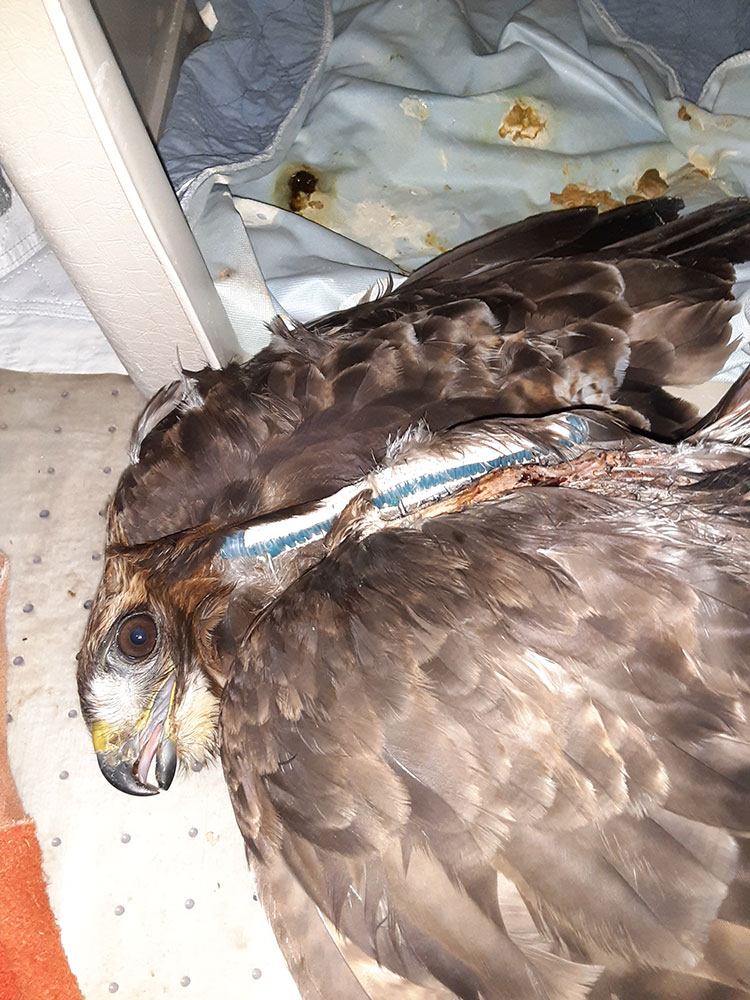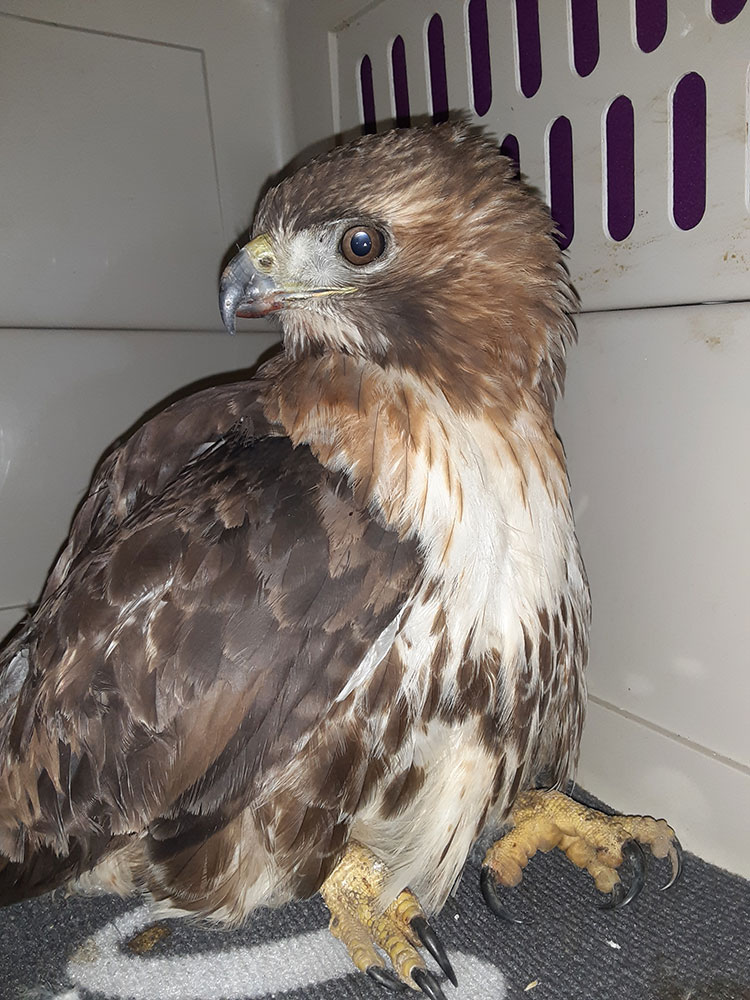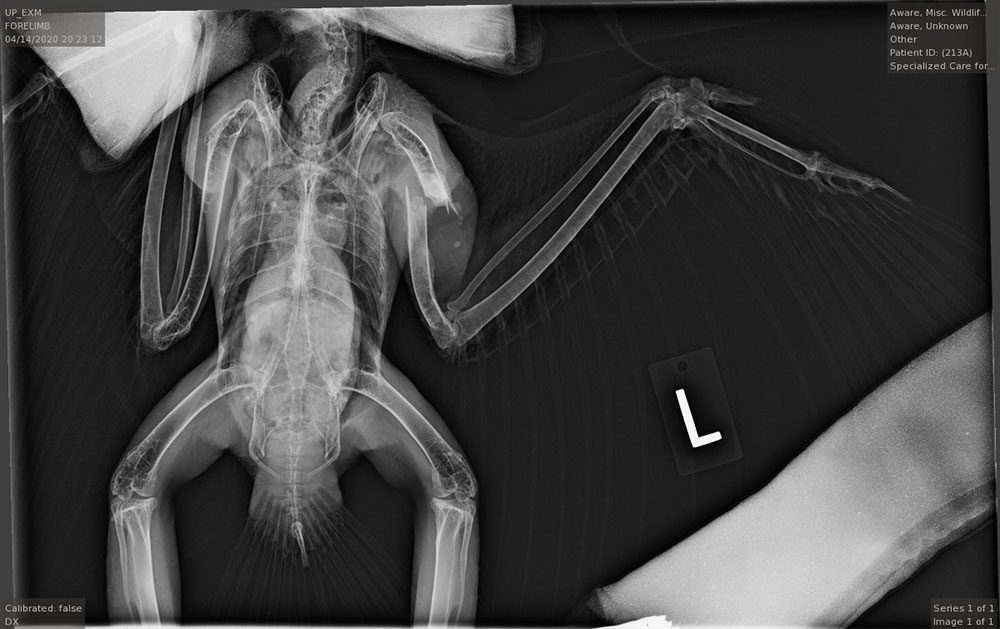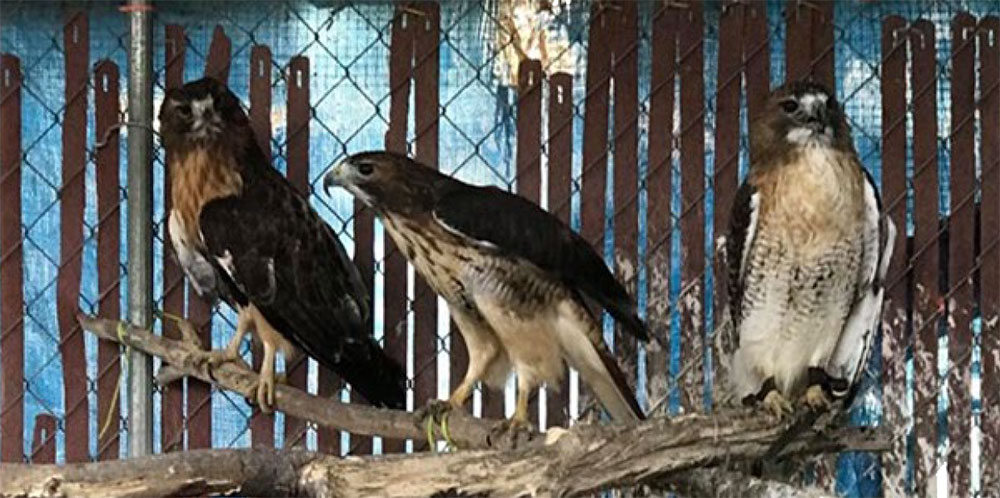
Who We Care For
We care for all animals, except those that are considered Rabies Vector Species (RVS) which include: raccoons, skunks and bats. These require special licensing and caging, as per the NYS DEC. At this time, none of the volunteers at AWARE have applied for this license, due to the volume of animals that we already care for.
As far as the "most" kinds of animals that we care for, that would be birds. While mammals are next, and reptiles/amphibians are less often encountered.
When it comes to species of birds; it varies from year to year. With song birds some years, we see more robins, while other years it may be purple grackles, or finches, or barn swallows, or cedar waxwings, or blue jays... this year was barn swallows (aka "barnies.")
We always have waterfowl i.e., mallard ducks, wood ducks and Canada geese. But we also have saved many ruddy ducks, grebes, old squaws, merganzers, cormorants, buffle head ducks, and the list goes on.
Raptors vary from year to year. We have had hawks, owls, accipiters and falcons of many species.
The populations of species of birds tends to change from year to year. After over 28 years of experience, this has been a constant change in numbers.
Mammals also vary, when it comes to squirrels and cottontail rabbits, which are the most prevalent species we care for. We also care for white tailed deer, chipmunks, fox, coyote, opossum, and woodchucks. OK, I confess, I still care for mice, moles and voles too!
Recent Rescue
We recently rescued a red-tailed hawk with a fractured wing. Upon initial examination of his wing, I found that he had closed compound fracture of the mid-shaft of the humerus bone that was already partially healed. I took him to a vet for a radiograph, to see if the wing could be surgically repaired. We both agreed that there was a good chance that wing could be repaired with surgery. Because of the damage to the muscles and bone and the amount of healing that had occurred, it was a more difficult surgery.
He went through the surgery well, and is currently with me doing well in rehab with supportive care and medications. We are hoping that he will be returned to the wild, but it may be a little longer rehab, because of the bone and soft tissue damage.
Thank you to the gentleman who called us to rescue him, and his generous donation.
Thank you to Dr. Wade, at Specialized Care for Exotic Animals for helping us out with him.



Rescue Update - Dec 20, 2020
This year, AWARE invested over $2,600 in veterinary treatment for one red-tailed hawk that required several surgeries, for over 4 months. With help from Specialized Care For Avian and Exotic Animals, he has a promising future to fly free again. Now he is in therapeutic care for exercise and reconditioning. He will have to go through a full molt (a normal yearly replacing of feathers,) which will not happen until summer of 2021. We are so grateful to our sister organization, “Wild Kritters of Niagara County” for taking him for a couple months, so that he could get more exercise and increase his endurance in their larger flight cage. He is now back with me for the winter.
When I originally recovered him, he was on the ground in a ditch. A caring man called us while riding his ATV. I examined him, and found that he had a partially healed fractured wing in the middle of the humerus. It was a “good” fracture (in wildlife rehab. there is such a thing) because of the location, and because it was closed (under the skin). I consulted with Dr. Wade at Specialized Care For Avian and Exotic Animals, on the possibility of repairing (pinning) the wing, and she was able to surgically stabilize the bones. It took longer for the bones to knit together, because there was a gap in the bone where it takes a longer time to grow back together.

Hawk (far right) with the boys. (left to right) “Bull” is 27+ years old, and “Gai” is 11+ years old.
























